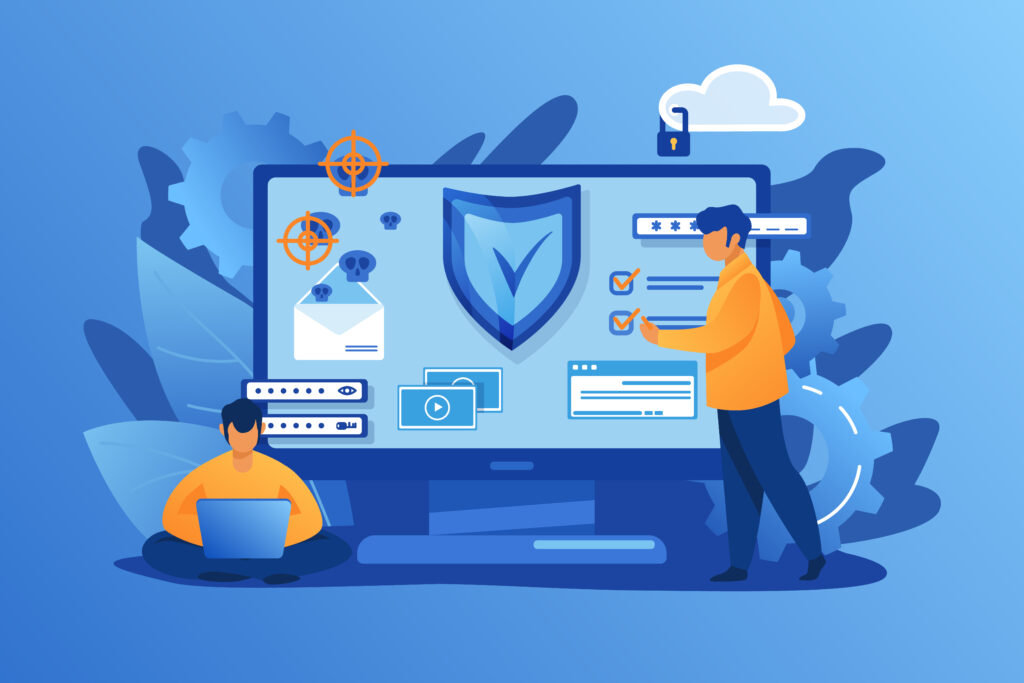XDR allows security teams to quickly and efficiently remediate advanced threats across all environments within their network, thus mitigating data breach impacts and costs while unifying incident response capabilities across their security infrastructure.
By eliminating siloed solutions focusing solely on layer-specific point solutions, XDR provides overstretched security teams and SOCs with end-to-end visibility and integration for enhanced alerting, investigation, and response times for threat neutralization.

What is XDR?
Extended Detection and Response, commonly called XDR, is an emerging approach to protecting technology infrastructure against cyber threats. It aims to strengthen detection and response capabilities while optimizing SOC performance and streamlining threat mitigation processes.
Integrates endpoint, network, cloud, and third-party data on one platform for visibility, investigation, and response against modern attacks. Furthermore, this solution exposes root causes quickly while speeding up incident resolution through analysis and integration.
Successful XDR implementation depends on ensuring all threats are detected and contained while limiting their impact. This requires proper network segregation so attackers cannot gain access to confidential information, credentials, services, or hosts in your XDR network.
Furthermore, an internet usage policy must be in place so hackers can avoid exploiting your network as efficiently.
XDR provides overstretched security teams and SOCs with the visibility and integration they require to detect, respond to, and mitigate threats quickly, mitigating damage quickly. Therefore, this approach has grown increasingly popular among organizations looking to enhance their cybersecurity posture; effective deployment of XDR can drastically decrease mean time to detect/respond times.
How does XDR work?
As a detection engine, XDR provides granular visibility across various security layers: endpoints, email servers, cloud workloads, and networks. It works by ingesting large volumes of data before using advanced artificial intelligence and machine learning algorithms to detect stealthy threats that otherwise would go undetected.
Once threats have been detected, XDR makes it simple and efficient to investigate and respond. With automated root cause analysis that shows all attack paths in one view across your security layers and targeted and effective responses such as quarantining emails, resetting credentials, blocking IP addresses, or updating security policies, it becomes straightforward to investigate and respond effectively.
XDR Security’s modern approach to collaboration and productivity by creating an incident view across your entire environment with correlating alerts is revolutionary. It reduces alerts and noise security teams must manage, freeing them up for more productive activities such as proactive threat hunting. Furthermore, this helps your organization increase security visibility and defensive measures against emerging threats more quickly.
What are the Benefits of XDR?
XDR allows organizations to quickly detect and respond quickly to advanced threats by monitoring multiple data streams simultaneously and eliminating blind spots that leave networks vulnerable. Furthermore, its improved mean time-to-detect and response enhances security visibility while decreasing business risks.
EDR detects only endpoints; by contrast, XDR combines the data from various IT tools and systems to give analysts a comprehensive picture of the threat landscape. Furthermore, its cloud-native platform offers flexibility, scalability, and opportunities for automation.
XDR allows immediate blocking and removal when an endpoint detects a malicious file. This prevents further spreading and potentially more damage being done.
XDR can also protect sensitive data and credentials by restricting attackers from accessing servers, databases, and services on internet-facing networks. This is accomplished by segregating Internet traffic into distinct zones within a network.
Difference between XDR and EDR
EDR systems primarily aim to protect endpoints such as computers, mobile phones, and servers against cyber threats; XDR goes further by enabling security teams to view an attack’s full path across email accounts, endpoints, cloud workloads, and networks; this gives analysts a complete picture of an attack so they can respond accordingly.
Additionally, XDR unifies an organization’s security tools into one solution, making it easier for security administrators to access the data and context required for responding to threats. With its API-centric integration feature, users can query any tool in the security stack for additional details and initiate responses without logging into another platform.
As an added benefit, XDR helps security teams prioritize threat data so they can address the most critical incidents first and minimize false positives. Furthermore, it provides visibility and context into an attack chain by showing what steps an attacker took to compromise a system and allows security teams to shut it down quickly, thus mitigating damage to systems and data.
Final Thoughts
XDR helps organizations by significantly decreasing the time required for security personnel to respond to cyberattacks. By providing a central platform that centralizes data from various environments within an enterprise, XDR enables teams to detect and address threats more rapidly, thus minimizing their cost and impact on an organization’s business operations.
Antivirus software and firewalls do not always accurately detect contemporary threats as they were designed to operate independently. XDR uses advanced techniques to scan multiple systems and environments for signs of cyber threats – much like how police officers look out for signs of burglaries in homes.
XDR tools detect anomalous activity that traditional tools cannot, such as malware exfiltration and beacons. With its enhanced ability, XDR tools become essential components of an enterprise security strategy; endpoints, networks, and cloud platforms must all be protected to remain operational.
